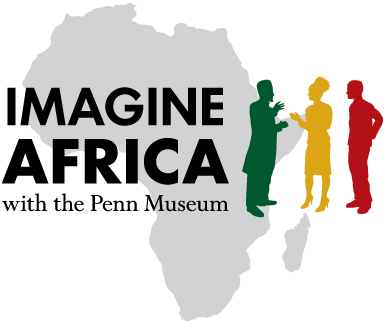
In this scene from the tomb of Meryre II at El Amarna, Egypt, Libyans are portrayed (middle register) offering ostrich eggs and feathers to Akhenaten.
Ostrich eggshells have had a long history in the art and commerce of Africa. Back in 1987, David Conwell from Penn’s Classical Archaeology department published an article in the Penn Museum Expedition Journal about the implications about Libyan trade drawn from analysis of ostrich eggshell fragments. Conwell suggests that the shell fragments give us a hint into the lives of late Mediterranean Bronze Age (ca. 2000 – 1000 BCE) Libyans of which there is not much known. What was known about Bronze-Age Libyans during the time this article was written is that they herded domesticated animals like sheep, lived in tribally organized kin groups, and had a central leader who exacted some sort of supreme control over the various tribes. It was also known that the Libyans of this era interacted with Pharonic Egypt as there are known Egyptian depictions of Libyans presenting ostrich eggs. From the ostrich egg shell finds and other supporting evidence reported in his article, Conwell suggested that trade existed between the Libyans and foreigners in this late Bronze Age period.

A decorated ostrich eggshell from South Sudan now on view at the Penn Museum's Imagine Africa Exhibit.
Ostrich eggs continued to be valued by other African cultures in the following centuries. In the African gallery at the Penn Museum, two ostrich egg water containers sit alongside a waistband also made of ostrich eggshell discs from Botswana’s Ghanzi distric. Both water containers from Southern Africa are made out of intact, hollow ostrich egg shells and exhibit geometric designs running along horizontal registers; one has a six-pointed star shape on its lower half. Also on view now in the Imagine Africa gallery is an ostrich eggshell from 19th century South Sudan. It has been decorated in a netting of beads, leather, and cowrie shells; experts are unsure as to its specific use (decorative, ritual, symbolic).














